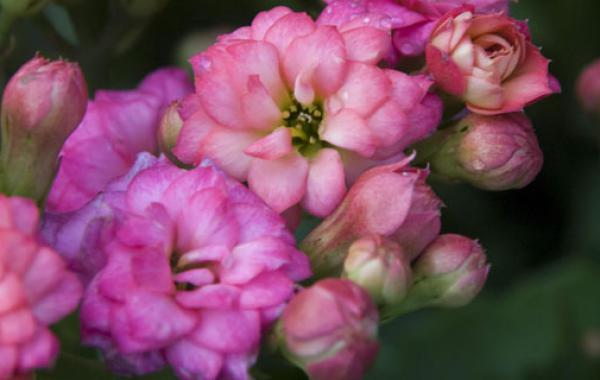Good cultivation techniques can skillfully control flower diseases and insect pests.
For the prevention and control of flower diseases and insect pests, it is not necessary to use a lot of pesticides, as long as we pay attention to certain methods during cultivation, we can skillfully prevent flower diseases and insect pests.
The use of cultivation techniques to control flower diseases and insect pests is an economic and basic control measure. Attention should be paid to the following aspects:
First, carry out crop rotation. The rotation in the flower bed has a good control effect on flower diseases and monophagous pests such as seedling damping-off disease, white silk disease, bacterial wilt and so on.
Second, rational planting. Rust with transferred hosts, such as iron stem begonia flowers, apples, pears, etc., should not be planted with juniper or other cypress trees, otherwise it will cause serious occurrence of flowers and trees rust such as iron stem begonia.
Third, disease-resistant (insect) varieties. According to local conditions, it is more important to select and cultivate varieties with resistance to diseases and insect pests, especially for some diseases and insect pests which are difficult to control or have no effective control methods. When breeding varieties, attention should be paid to other excellent characters of varieties, such as long flowering period, large flowers, bright flower color, cold resistance and drought resistance, so that the selected varieties can not only resist diseases and insect pests, but also have high ornamental value.
Fourth, apply fertilizer scientifically. Scientific fertilization can regulate the nutritional status of flowers and enhance the ability of resistance to diseases and insect pests. For example, the use of reasonably prepared culture soil of potted rose can reduce the occurrence and harm of black spot of rose. The chlorosis of gardenia and camellia can be controlled by adding appropriate amount of ferrous sulfate (commonly known as black alum) or chelating iron. Nitrogen, phosphorus and potassium fertilizers should be matched reasonably, and farm manure should be fully mature before it can be used.
Fifth, rational watering. Excessive wet soil and poor drainage are the inducement of seedling quenching disease and the direct cause of flower root rot. Timely discharge of stagnant water in flower beds and potted soil has an obvious effect on the prevention and control of root rot. Pathogens such as cherry blossom root cancer and jasmine silk disease can spread with running water. Pay attention to the direction of water flow during irrigation to prevent bacteria from spreading to nearby healthy plants. Timely watering to relieve drought can reduce the occurrence of rose powdery mildew.
Sixth, cultivate strong seedlings. Some diseases and insect pests are transmitted with seed, seedling, bulb, bulb, scion, cuttings and other reproductive materials of flowers, such as root cancer, root knot nematode disease and some virus diseases. Therefore, the selection of disease-free and pest-free healthy materials for sowing and reproduction is the key to cultivate healthy seedlings free of diseases and insect pests.
7. Thoroughly disinfect. Fumigation is often used to disinfect ① greenhouse. The specific approach is: close the doors and windows in the evening and light the medicament for fumigation, and then open the window the next day for ventilation. Such as every 10 cubic meters with 20% Xukelin aerosol 2-3 grams, 7-10 days once, even 3 times. ② soil disinfection is generally divided into two kinds: flower cultivation soil and ground flower soil disinfection. The disinfection of flower cultivation soil is often treated with high-pressure steam and chemicals. Soil disinfection of flowers and plants can also be treated with chemicals. Choose 70% pentachloronitrobenzene and 80% Dysen zinc wettable powder in the same amount, 8-10 grams per square meter and turn it into the ground evenly. It can also be irrigated with 50 milliliters of formalin and 8-12 kg of water.
Eighth, clear the garden in time. Combined with the shaping and pruning of flowers and trees, the disease of fallen leaves, diseased (insect) branches and diseased plants can be destroyed thoroughly and timely, which can get twice the result with half the effort.
Related
- What if the leaves of potted flowers turn yellow?
- Florescence Control of several Flowers
- Anti-freezing technology and post-freezing nursing technology of flowers
- What is the classification of flowers? What are the common methods of flower classification?
- Prevention and control of alkali and acid damage of flowers in courtyard
- Technology of Anti-freezing and restoring growth of Flower seedlings in greenhouse and greenhouse
- How does flower fertilization not hurt the root? Fertilization technology of flowers
- Key points of disinfection in flower greenhouse
- Several pesticides that are banned or used cautiously in flowers
- How to fertilize the flowers that watch the leaves?



